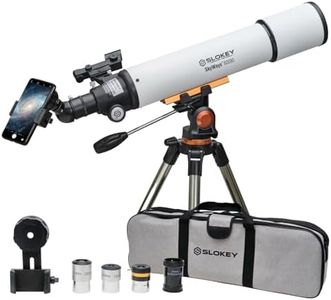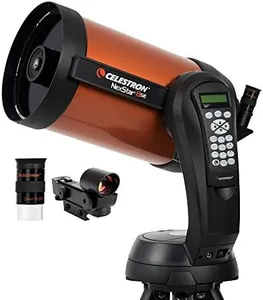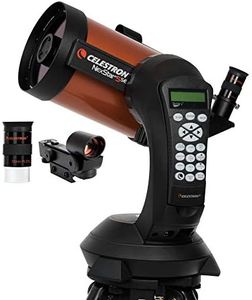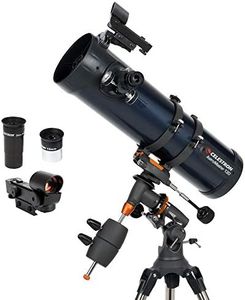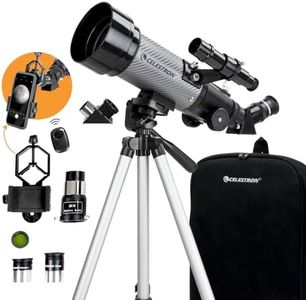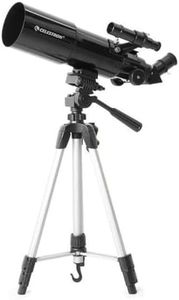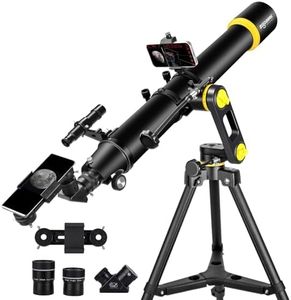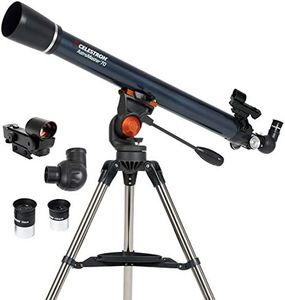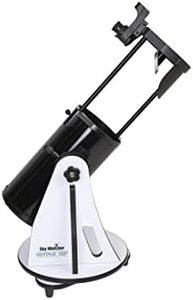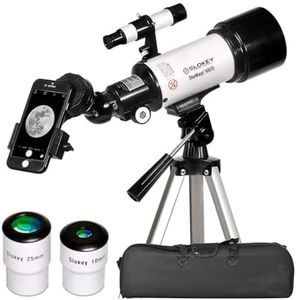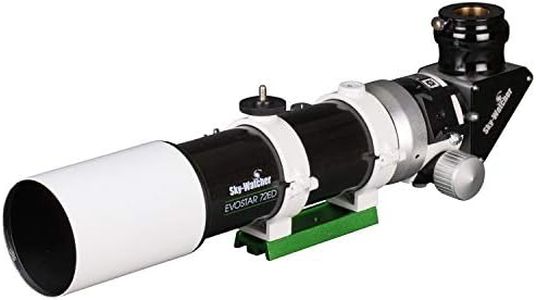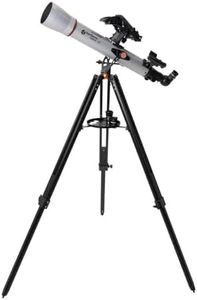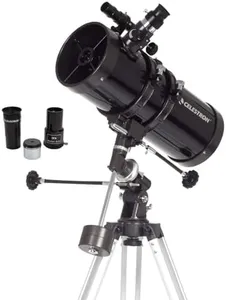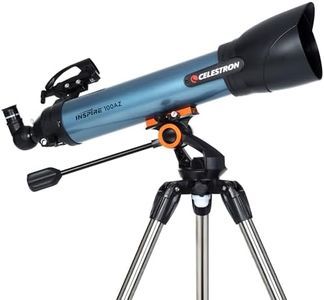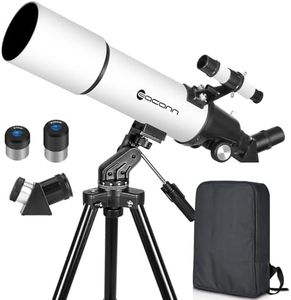We Use CookiesWe use cookies to enhance the security, performance,
functionality and for analytical and promotional activities. By continuing to browse this site you
are agreeing to our privacy policy
10 Best Telescopes For Beginners
From leading brands and best sellers available on the web.Buying Guide for the Best Telescopes For Beginners
Choosing a telescope as a beginner can be an exciting journey into the world of astronomy. The right telescope will open up the universe for you, allowing you to explore the night sky and observe celestial objects in detail. When selecting a telescope, it's important to consider factors such as ease of use, portability, and the types of celestial objects you are most interested in observing. Understanding the key specifications of telescopes will help you make an informed decision and ensure that you choose a model that suits your needs and interests.ApertureAperture refers to the diameter of the telescope's main optical component, which can be a lens or a mirror. It is one of the most important specifications because it determines how much light the telescope can gather. The more light it gathers, the better you can see faint objects. Aperture sizes can range from small (around 60mm) to large (over 200mm). For beginners, a telescope with an aperture between 70mm and 130mm is usually sufficient. This range offers a good balance between portability and the ability to see a variety of celestial objects, such as the Moon, planets, and some deep-sky objects.
Focal LengthThe focal length of a telescope is the distance from the main optical component to the point where the image is brought into focus. It affects the magnification and field of view of the telescope. A longer focal length provides higher magnification but a narrower field of view, which is ideal for observing planets. A shorter focal length offers a wider field of view, which is better for viewing larger areas of the sky, such as star clusters. Beginners might prefer a telescope with a moderate focal length, which provides a good balance for viewing a variety of objects.
MagnificationMagnification is how much larger a telescope can make an object appear. It is determined by the combination of the telescope's focal length and the eyepiece used. While high magnification might seem appealing, it's not always better. Too much magnification can result in a blurry image if the telescope's aperture isn't large enough to support it. For beginners, it's important to have a range of eyepieces that offer different magnifications, allowing you to adjust based on what you're observing. A good starting point is a telescope that can provide magnifications between 50x and 150x.
Mount TypeThe mount is what holds the telescope and allows you to point it at different parts of the sky. There are two main types: altazimuth and equatorial. Altazimuth mounts are simpler and easier to use, making them ideal for beginners. They move up and down and left to right, similar to a camera tripod. Equatorial mounts are more complex and are designed to follow the rotation of the Earth, which is useful for long-term tracking of objects. Beginners might prefer an altazimuth mount for its simplicity and ease of use.
PortabilityPortability refers to how easy it is to transport and set up the telescope. This is an important consideration if you plan to take your telescope to different locations for stargazing. Smaller telescopes are generally more portable and easier to handle, making them a good choice for beginners who want to explore different observing sites. Consider the weight and size of the telescope, as well as how easy it is to assemble and disassemble, to ensure it fits your lifestyle and observing habits.
